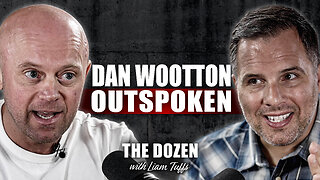Premium Only Content

The Tipping Point by Malcolm Gladwell | Summary
Buy Here: https://amzn.to/3PGDOeA
""The Tipping Point"" by Malcolm Gladwell delves into the fascinating concept of how small actions and events can trigger significant societal changes, a phenomenon he terms the 'tipping point.' Gladwell argues that when specific factors reach a critical mass, they can lead to rapid and often unexpected transformations in various aspects of our lives.
Gladwell identifies three types of key individuals who play pivotal roles in the tipping point process. These include Connectors, who possess extensive social networks, Mavens, individuals with specialized knowledge and a willingness to share it, and Salesmen, persuasive communicators who can effectively promote ideas or products.
The book introduces the notion of the 'stickiness factor,' which refers to the quality that makes an idea or message memorable and contagious. Gladwell explores how certain ideas or products achieve this stickiness and spread rapidly among the masses.
Context is another vital element in understanding tipping points. Gladwell highlights how minor changes in the environment or social context can lead to significant shifts in behavior and outcomes. He provides numerous case studies and real-world examples to illustrate these concepts, including the spread of syphilis in Baltimore, the resurgence of Hush Puppies shoes, and the remarkable decline in crime rates in New York City.
Throughout ""The Tipping Point,"" Gladwell applies these principles to various phenomena, such as epidemics, trends, and social change movements. He emphasizes the roles of influencers and social networks in these processes and suggests that understanding the dynamics of tipping points can have practical applications in marketing, public health, and social interventions.
In essence, ""The Tipping Point"" offers readers a thought-provoking exploration of how small changes can lead to significant societal shifts. It encourages us to consider the critical roles played by individuals, context, and stickiness in the spread of ideas and behaviors, ultimately providing valuable insights into the dynamics of social epidemics and how we can harness them for positive change."
-
 42:43
42:43
Dad Dojo Podcast
7 hours ago $0.35 earnedEP19: Cashing In Crypto
5.61K -
 2:30:07
2:30:07
TheDozenPodcast
20 hours agoEpstein island, fake news, Royal Family scandal: Dan Wootton
3.63K3 -
![RASKIN THREATENS CLASS ACTION TO STOP MUSK. BERNIE LIES TO THE PUBLIC ABOUT DOGE [EP 4434-8AM]](https://1a-1791.com/video/fwe1/5e/s8/1/_/a/t/I/_atIx.0kob-small-RASKIN-THREATENS-CLASS-ACTI.jpg) LIVE
LIVE
The Pete Santilli Show
4 hours agoRASKIN THREATENS CLASS ACTION TO STOP MUSK. BERNIE LIES TO THE PUBLIC ABOUT DOGE [EP 4434-8AM]
1,762 watching -
 10:31
10:31
Space Ice
22 hours agoHardcore Henry - A Average Day In The Life Of Space Ice - Best Movie Ever
5.28K22 -
 8:03
8:03
Colion Noir
21 hours agoA Judge Just Ruled You Can Own A Machine Gun
14.5K54 -
 46:13
46:13
Survive History
22 hours ago $0.49 earnedCould You Survive in the Roman Special Forces?
8.28K -
 19:40
19:40
Fit'n Fire
22 hours ago $0.02 earnedThe Best PDW -- Sig Sauer MPX 8" PDW
4.34K4 -
 1:03:12
1:03:12
Game On!
13 hours ago $2.56 earnedOUCH, That Hurts! Eagles DOMINATE Chiefs in Super Bowl 59!
11.4K16 -
 1:00:23
1:00:23
Ryan Long
1 month agoRyan Long - Problem Solved (FULL STANDUP SPECIAL)
138K39 -
 15:42
15:42
Russell Brand
20 hours agoThey Can't Hide This About USAID Any Longer
212K324